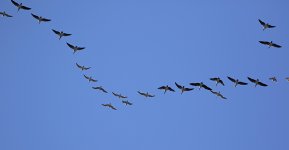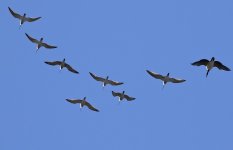Macswede
Macswede
I saw what I thought was a flock of geese on the way to the car in Helsingborg on 18th April. I had a quick look in the camera and saw that the geese were Barnacle geese. When I downloaded the pictures to the camera that evening I saw that the formation of geese was being led by Curlews. I've never seen or heard of this behaviour before. Is is common and why would 2 very different species cooperate in this way? I've heard of mixed flocks of geese but this is something else.






